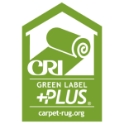Green cleaning is defined as cleaning to protect health without harming the environment. It has been found that widely used cleaning products can have serious adverse effects on the health of building occupants and janitors. At the same time, these cleaning products are harming the environment. Green cleaning is a widely accepted movement to make cleaning for the health of building occupants and janitors a primary concern, while minimizing the harm to the environment through better purchasing practices and cleaning processes. Green cleaning means emphasizing the environmental sustainability of cleaning operations and overall building health (i.e. indoor air quality) and not solely evaluating building cleanliness based on appearance.
How does green cleaning work?
Green cleaning is more than just substituting chemicals; it involves choosing cleaning processes that improve the health of a building. Methods include preventing dirt and dust from entering the building and using effective and efficient cleaning methods, such as HEPA filtration vacuums and micro fiber cloths. The focus on the process of cleaning means that custodial training is an integral step in the process; in addition, comprehensive training is required to ensure that custodians are using the products in a safe and ef1icient manner. Green cleaning also takes into consideration the product’s entire life cycle, favoring concentrated products that are packaged in reduced, refil1ab1e, or recyclable packaging.
Benefits of a green cleaning program
Health benefits for workers: Most people spend 90% of their time indoors, forcing them to be exposed to the chemicals that are used in buildings. The chemicals used in cleaning products have been linked to multiple chemical sensitivity syndrome, allergies, contact dermatitis, headaches, dry eyes, nausea, dizziness, and fatigue. Instituting a green cleaning program helps to improve indoor air quality, which in tum, helps to increase workers’ productivity, decrease absenteeism, and reduce medical and insurance costs.
Health benefits for custodians: Custodians spend their entire day working with harmful chemicals, giving them an increased chance of injury. Cleaning chemicals can cause many health problems for custodians, including: eye damage, skin burns, headaches, asthma, organ damage, reproductive disorders, and cancer. The Janitorial Products Pollution estimates that the average janitor uses about 23 gallons of chemicals per year, of which 25% hazardous. Switching to green cleaning products and processes decreases the overall use chemicals and hazardous products, which decreases risk of injury to custodians.
Environmental benefits: Cleaning products contain many ingredients that produce environmental effects. Two examples include volatile organic compounds (VOCs) contribute to photochemical smog, tropospheric ozone, and carcinogenic indoor air quality, and phosphates and nitrates that contribute to eutrophication in waterways.
Contact GBS at info@gbscleaning.com if you’d like an estimate to take your office cleaning program to the next level.













